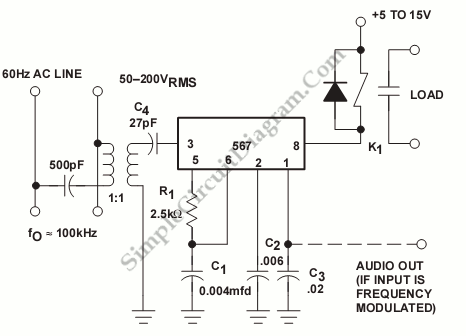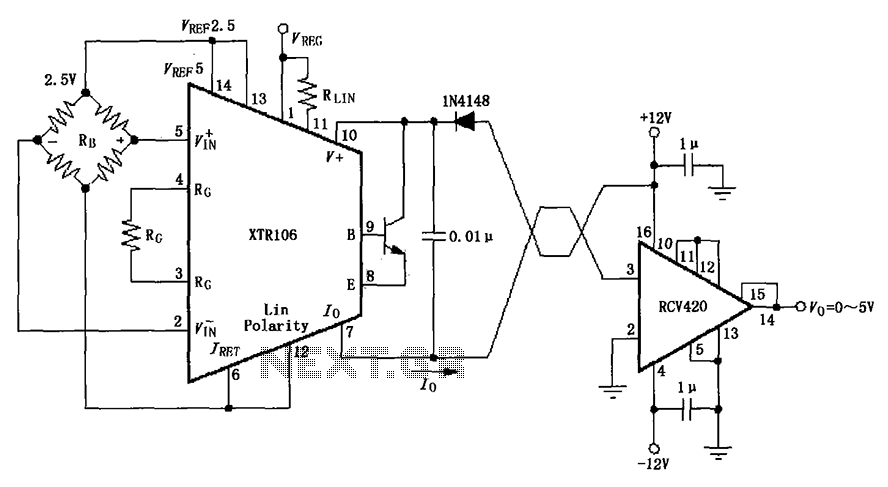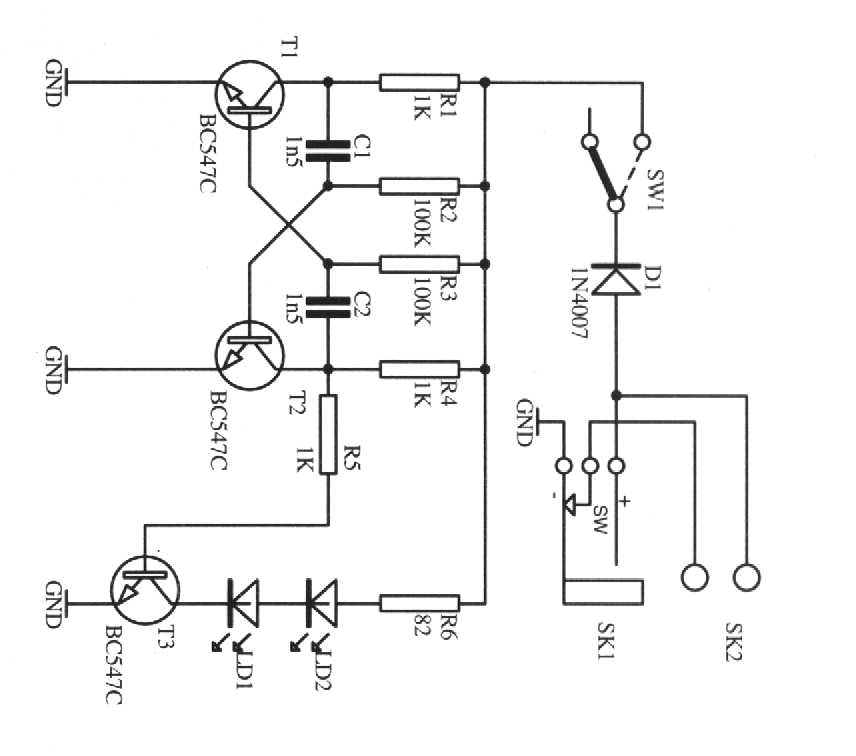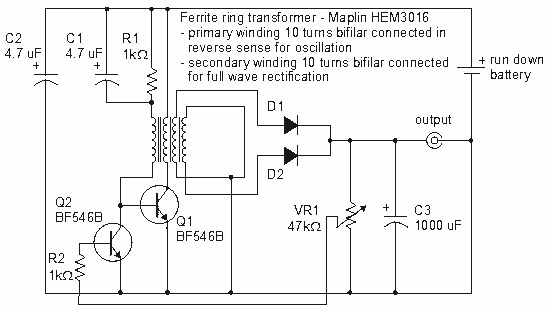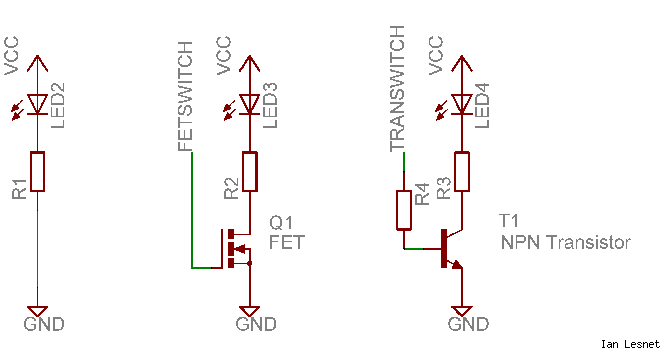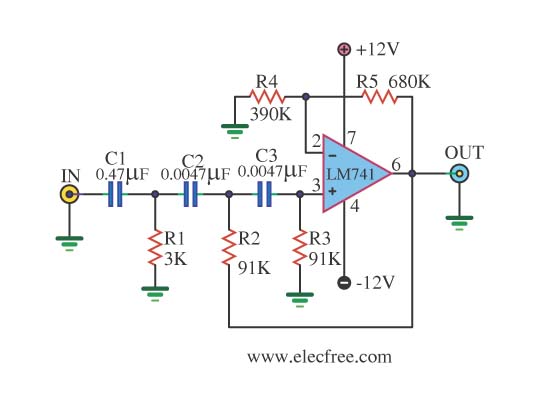
High Power Bicycle Horn
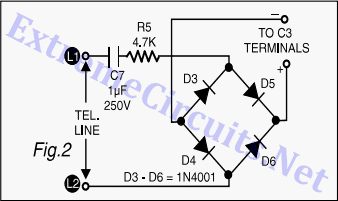
A circuit for a bicycle horn utilizing a low-cost telecom ringer chip is presented. This design can be powered by a bicycle dynamo, eliminating the need for frequently replaced batteries. The circuit includes a half-wave voltage-doubler section formed by diodes (D1 and D2) and capacitors (C1 and C2). The output from this voltage doubler is directed to capacitor C3 through resistor R1. The maximum DC voltage allowed at the input terminals of IC1 is 28V, so a zener diode (ZD1) is included for protection and voltage regulation. The remainder of the circuit functions as a tone generator based on IC1 (KA2411). The dual-tone output from pin 8 of IC1 is transmitted to the primary of transformer X1 (similar to those used in transistor radios) via capacitor C6. The secondary of X1 connects directly to a loudspeaker. If a piezoceramic element is preferred over the loudspeaker, capacitor C6, transformer X1, and the loudspeaker should be removed. One end of the piezoceramic disk connects to pin 5 of IC1, while the other end connects to pin 8 of IC1 through a 1/4W, 1-kiloohm resistor. IC1 (KA2411) is also available in a COB style with the same pin configuration, and both versions perform comparably. For optimal results with the COB package, it is recommended to modify the values of resistors R2 to R4 to 330-kilo-ohm, capacitor C4 to 0.47 µF, 63V electrolytic (with the positive end connected to pin 3 of IC1), and capacitor C5 to 0.005 µF, 63V. This bicycle horn circuit can also serve as an additional telephone ringer by removing all components to the left of capacitor C3 and connecting the circuit illustrated in Fig. 2 to the terminals of capacitor C3.
The circuit design for the bicycle horn is a practical application of a telecom ringer chip, effectively leveraging the energy produced by a bicycle dynamo. The half-wave voltage doubler circuit, consisting of diodes D1 and D2 along with capacitors C1 and C2, serves to increase the voltage supplied to the system, ensuring adequate power for the operation of IC1. The choice of a zener diode (ZD1) enhances the reliability of the circuit by providing over-voltage protection and stabilizing the voltage supplied to the integrated circuit.
The KA2411 chip operates as a tone generator, producing a dual-tone output that is essential for the horn's audible signal. The integration of transformer X1 allows for the amplification of the audio signal, facilitating a louder output through the loudspeaker. The design also accommodates alternative sound-producing elements such as a piezoceramic disk, which can be directly interfaced with the IC for a different sound profile.
For users opting for the COB version of the KA2411, specific component values have been tailored to optimize performance, ensuring that the circuit operates efficiently under various conditions. This adaptability extends the utility of the circuit beyond just a bicycle horn; it can be modified for use as a telephone ringer, demonstrating the versatility of the design. The circuit's simplicity and reliance on readily available components make it an attractive option for hobbyists and engineers alike.An interesting circuit of a bicycle horn based on a popular, low cost telecom ringer chip is described here. This circuit can be powered using the bicycle dynamo supply and does not require batteries, which need to be replaced frequently.
The section comprising diodes (D1 and D2) and capacitors (C1 and C2) forms a half-wave voltage-doubler circuit . The output of the voltage doubler is fed to capacitor C3 via resistor R1. The maximum DC supply that can be applied to the input terminals of IC1 is 28V. Therefore zener diode ZD1 is added to the circuit for protection and voltage regulation. The remainder of the circuit is the tone generator based on IC1 (KA2411). The dual-tone output signal from pin 8 of IC1 is fed to the primary of transformer X1 (same as used in transistor radios) via capacitor C6. The secondary of X1 is connected to a loudspeaker directly. In case you are interested in connecting a piezoceramic element in place of the loudspeaker, remove capacitor C6, transformer X1, and the loudspeaker.
Connect one end of the piezoceramic disk to pin 5 of IC1 and the other end to pin 8 of IC1 through a 1/4W, 1-kiloohm resistor. IC1 KA2411 is also available in COB style, with the same pin configuration. Both packages work equally well. However, to get the best results with the COB package, change values of resistors R2 through R4 to 330-kilo-ohm, capacitor C4 to 0.
47 µF, 63V electrolytic (positive end to pin 3 of IC1), and C5 to 0. 005 µF, 63V. This bicycle horn project can also be used as a telephone extra ringer by just removing all components on the left side of capacitor C3 and connecting the circuit shown in Fig. 2 to the terminals of capacitor C3. 🔗 External reference
The circuit design for the bicycle horn is a practical application of a telecom ringer chip, effectively leveraging the energy produced by a bicycle dynamo. The half-wave voltage doubler circuit, consisting of diodes D1 and D2 along with capacitors C1 and C2, serves to increase the voltage supplied to the system, ensuring adequate power for the operation of IC1. The choice of a zener diode (ZD1) enhances the reliability of the circuit by providing over-voltage protection and stabilizing the voltage supplied to the integrated circuit.
The KA2411 chip operates as a tone generator, producing a dual-tone output that is essential for the horn's audible signal. The integration of transformer X1 allows for the amplification of the audio signal, facilitating a louder output through the loudspeaker. The design also accommodates alternative sound-producing elements such as a piezoceramic disk, which can be directly interfaced with the IC for a different sound profile.
For users opting for the COB version of the KA2411, specific component values have been tailored to optimize performance, ensuring that the circuit operates efficiently under various conditions. This adaptability extends the utility of the circuit beyond just a bicycle horn; it can be modified for use as a telephone ringer, demonstrating the versatility of the design. The circuit's simplicity and reliance on readily available components make it an attractive option for hobbyists and engineers alike.An interesting circuit of a bicycle horn based on a popular, low cost telecom ringer chip is described here. This circuit can be powered using the bicycle dynamo supply and does not require batteries, which need to be replaced frequently.
The section comprising diodes (D1 and D2) and capacitors (C1 and C2) forms a half-wave voltage-doubler circuit . The output of the voltage doubler is fed to capacitor C3 via resistor R1. The maximum DC supply that can be applied to the input terminals of IC1 is 28V. Therefore zener diode ZD1 is added to the circuit for protection and voltage regulation. The remainder of the circuit is the tone generator based on IC1 (KA2411). The dual-tone output signal from pin 8 of IC1 is fed to the primary of transformer X1 (same as used in transistor radios) via capacitor C6. The secondary of X1 is connected to a loudspeaker directly. In case you are interested in connecting a piezoceramic element in place of the loudspeaker, remove capacitor C6, transformer X1, and the loudspeaker.
Connect one end of the piezoceramic disk to pin 5 of IC1 and the other end to pin 8 of IC1 through a 1/4W, 1-kiloohm resistor. IC1 KA2411 is also available in COB style, with the same pin configuration. Both packages work equally well. However, to get the best results with the COB package, change values of resistors R2 through R4 to 330-kilo-ohm, capacitor C4 to 0.
47 µF, 63V electrolytic (positive end to pin 3 of IC1), and C5 to 0. 005 µF, 63V. This bicycle horn project can also be used as a telephone extra ringer by just removing all components on the left side of capacitor C3 and connecting the circuit shown in Fig. 2 to the terminals of capacitor C3. 🔗 External reference
